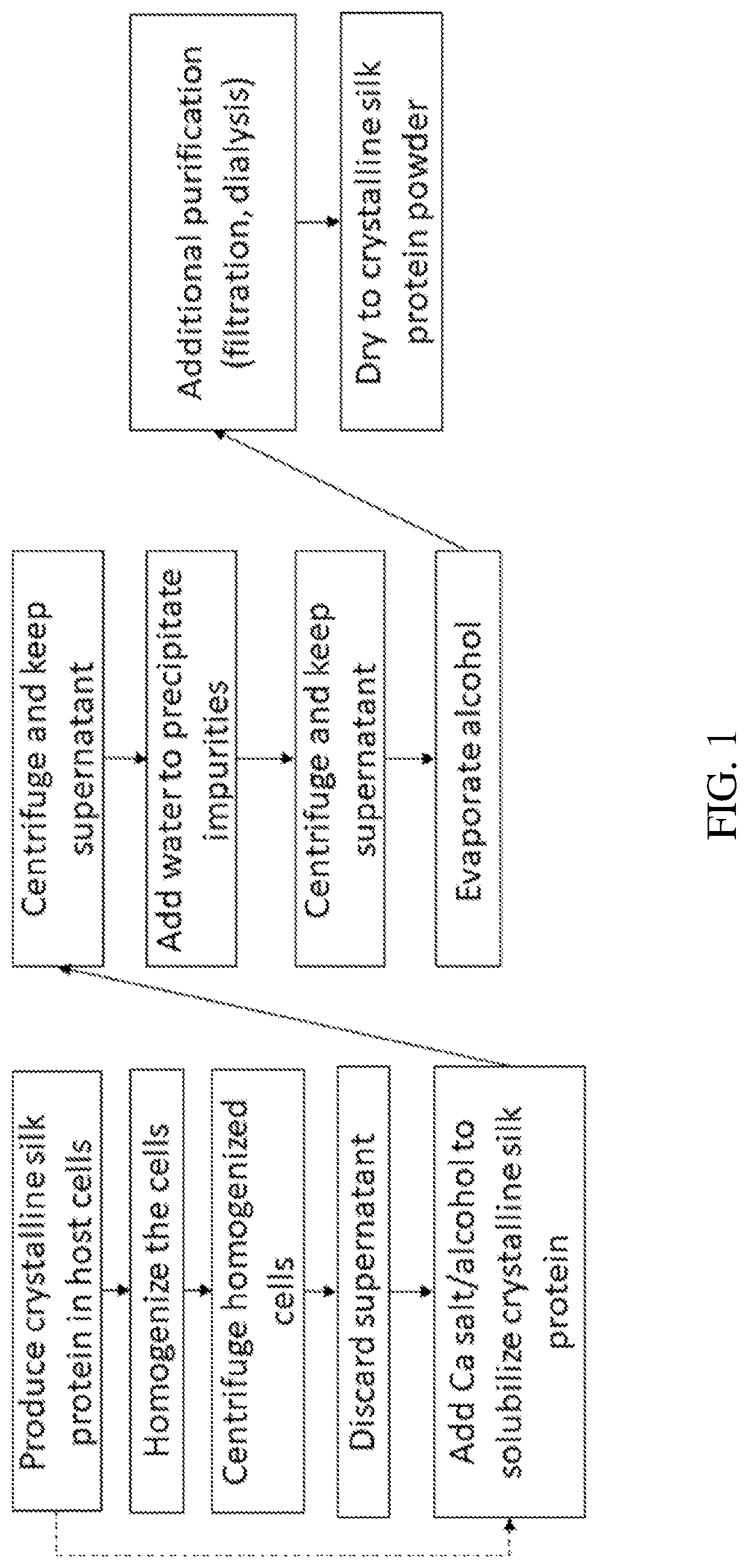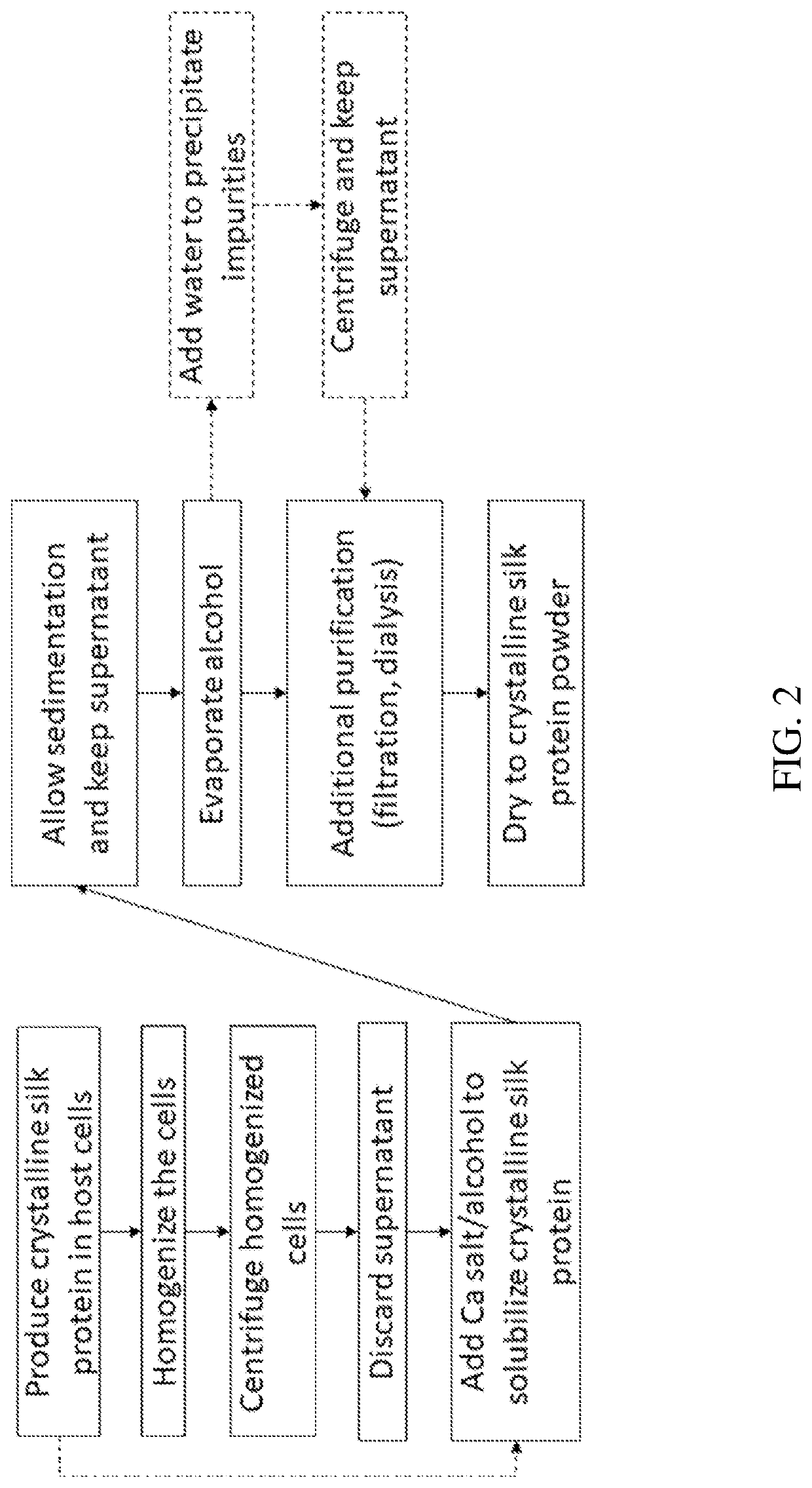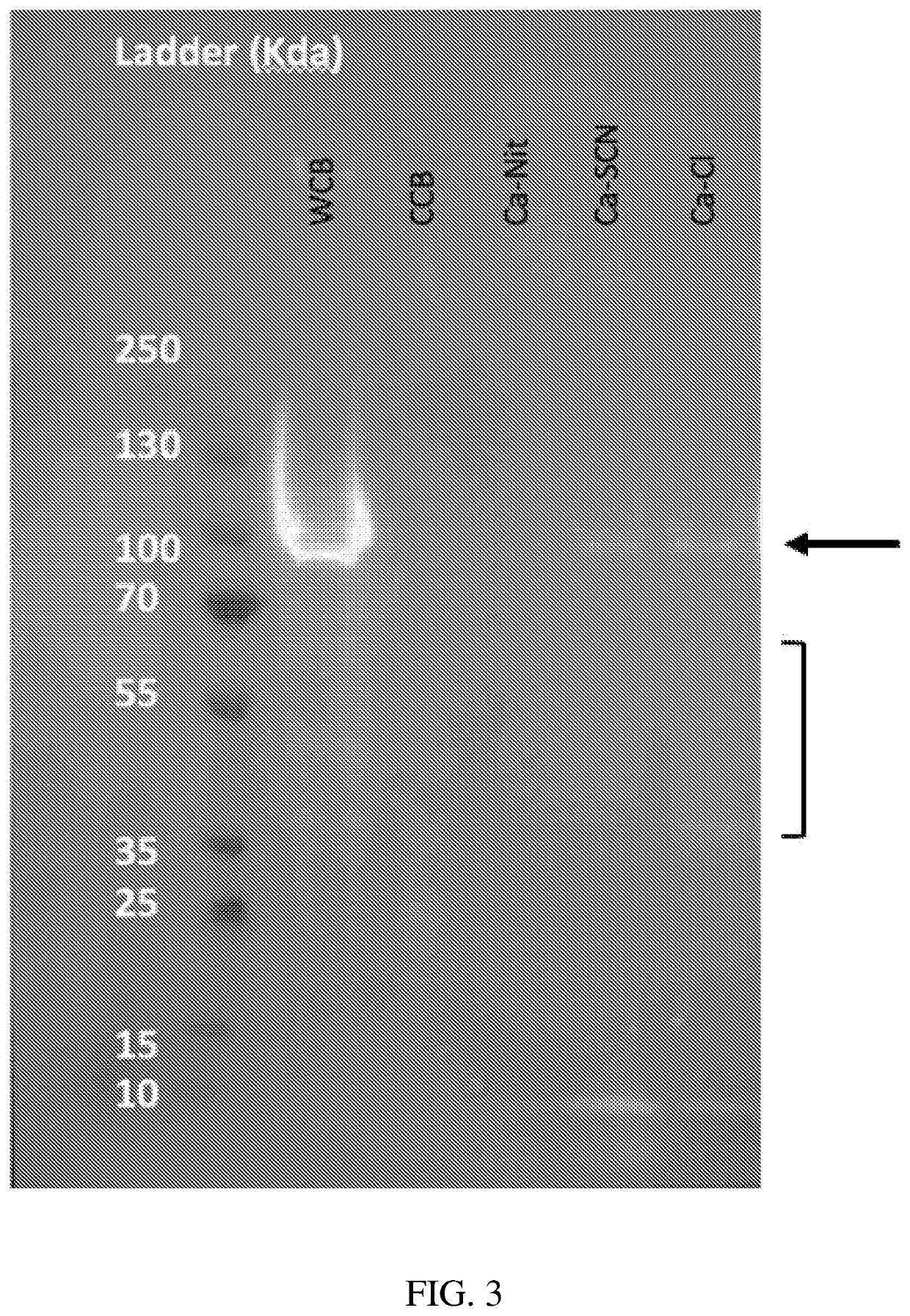Methods for improved extraction of spider silk proteins
a technology of spider silk and protein, which is applied in the field of solubilizing a recombinant spider silk protein from a host cell, can solve the problems of poor hand feel, poor yield and solids or fibers with low tenacity, and undesirable aggregates of polypeptides
- Summary
- Abstract
- Description
- Claims
- Application Information
AI Technical Summary
Benefits of technology
Problems solved by technology
Method used
Image
Examples
example 1
alt Extraction
[0144]Highly crystalline silks form aggregates in solution, resulting in decreased solubility and thus decreased recovery from host cells during production. Thus, improved methods of solubilizing such crystalline silks are required. The method described in these examples is to use calcium salts and an alcohol to increase solubility of the silk protein.
[0145]Materials and Methods
[0146]Multiple calcium salts were used to extract the UDMisp64k protein, also referred to as P0 (representative block amino acid sequence shown in SEQ ID NO. 23), to identify the optimal calcium salt. P0 is an exemplary highly crystalline silk protein. E. coli transformed with an expression vector containing the P0 silk gene fused to a 6×His tag (6 histidines appended to the c-terminus of P0 with a glycine linker (GGGGG-HHHHHH)) were grown in a Terrific Broth, a defined minimal salt media, with chloramphenicol. P0 expression was induced with IPTG after 24 hours of fermentation. The E. coli was h...
example 2
xtraction
[0150]The selection of the alcohol was investigated to determine the optimal extraction conditions. First, insoluble P0 was incubated with CaCl2 in water or in methanol, to determine the requirement to include an alcohol solvent. Next, ethanol and isopropanol were substituted as the primary solvent. Finally, water was introduced along with methanol as the solvent, to reduce the volatility of the process.
[0151]Materials and Methods
[0152]P0 was expressed in E. coli cells as described in Example 1. Cells were lysed using a microfluidizer and the insoluble material was pelleted via centrifugation. Solutions with different concentrations of CaCl2 in different solvents were made as shown in Table 4.
TABLE 4Condition #CaCl2 (M)Solvent 12Water 23Water 34Water 41Methanol (MeOH) 51.5Methanol (MeOH) 62Methanol (MeOH) 72Ethanol (EtOH) 8225% MeOH in water 9250% MeOH in water10275% MeOH in water
[0153]100 mg of insoluble cell material was added to 1 ml of each solution and resuspended via ...
example 3
n Time and Temperature
[0160]The temperature of the extraction was altered, to determine the optimal temperature for maximal extraction while minimizing the extraction time. Agitation of the samples was also introduced. Lowering the temperature along with continuous mixing was investigated as a more scalable process scenario.
[0161]Materials and Methods
[0162]P0 was expressed in E. coli cells as described in Example 1. Cells were lysed using a microfluidizer and the insoluble material was pelleted via centrifugation. 1 ml of a 2M CaCl2 solution in methanol was added to 100 mg of the insoluble cell material, which was resuspended via pipetting. 12 aliquots were made. 6 aliquots were incubated at 35° C. with agitation for 0, 15, 30, 60, 120, and 240 min. The remaining 6 aliquots were incubated at 55° C. with agitation for 0, 5, 15, 30, 60, and 120 min. At each time point the samples were removed and centrifuged at 15,000×g in a benchtop centrifuge (Eppendorf 5415D). The supernatants cont...
PUM
| Property | Measurement | Unit |
|---|---|---|
| temperature | aaaaa | aaaaa |
| temperature | aaaaa | aaaaa |
| volume | aaaaa | aaaaa |
Abstract
Description
Claims
Application Information
 Login to View More
Login to View More - R&D
- Intellectual Property
- Life Sciences
- Materials
- Tech Scout
- Unparalleled Data Quality
- Higher Quality Content
- 60% Fewer Hallucinations
Browse by: Latest US Patents, China's latest patents, Technical Efficacy Thesaurus, Application Domain, Technology Topic, Popular Technical Reports.
© 2025 PatSnap. All rights reserved.Legal|Privacy policy|Modern Slavery Act Transparency Statement|Sitemap|About US| Contact US: help@patsnap.com



